This Tiny Dog Makes No Bones About Bossing Big Dogs Around
She's very outgoing and happy and loves to be around people. She'll get along well with everyone in your household. She also loves kids, and has the energy to keep up with them. Couldn't you just love this tiny dog with a big dog attitude?

STORY AT-A-GLANCE
- The tiny Papillon is one of the oldest toy spaniels
- “Papillon” means “butterfly” in French, and refers to the appearance of the breed’s large, upright, fringed ears
- The Papillon is an outgoing, intelligent dog who excels at dog sports, including obedience competitions
- If you’re considering adding a Papillon to your family, be sure to check your local shelters and rescue organizations for adoptable dogs
Editor's Note: This article is a reprint. It was originally published March 18, 2016.
The tiny Papillon is one of the oldest toy spaniels. "Papillon" means "butterfly" in French, and refers to the appearance of the breed's large, upright, and fringed ears. The Papillon is an outgoing, intelligent dog who excels at dog spots, including obedience competitions.
If you're considering adding a Papillon to your family, be sure to check your local shelters and rescue organizations for adoptable dogs.
10 Fascinating Facts About the Papillon
- The Papillon is one of the oldest Toy Spaniels
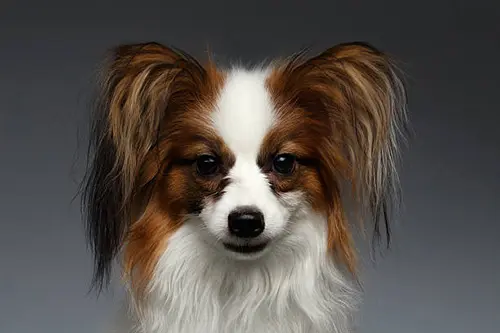
The adorable Papillon is also called the Continental Toy Spaniel and the dwarf spaniel. "Papillon" is the French word for "butterfly," which reflects the butterfly appearance of the breed's large, upright ears covered in long, fringed hair.
Papillons can also be born with dropped ears. This variety is called a Phalène, which is French for "moth," and both varieties can be present in the same litter. - The Papillon is lovely to look at
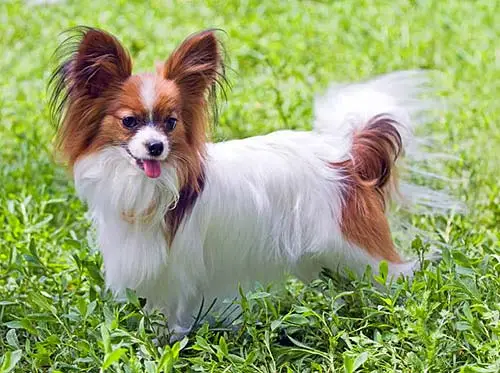
The average size of the Papillon is just 8 to 11 inches at the shoulder, and 7 to 10 pounds.
The Pap is small-boned and lightweight. His muzzle is on the short side and tapers to the nose. His dark eyes are black rimmed, and some Paps look as if they are wearing eyeliner. His tail is long and set high, carried over the body and covered with long hair.
Papillons have a straight, long, fine, and single coat with extra feathering around the chest, ears, the backs of the legs, and the tail. Coats are white with patches of color and a mask covers the eyes and ears from back to front. - Papillons are highly trainable
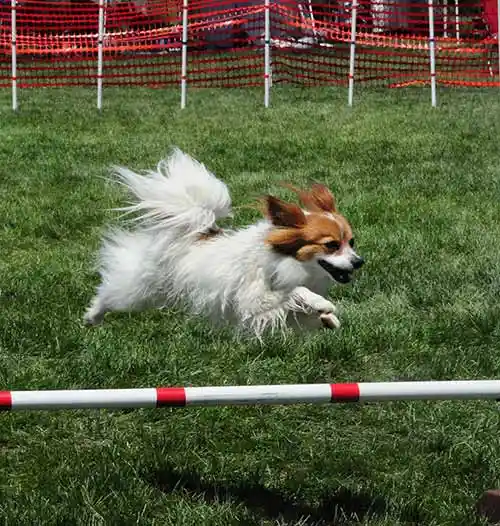
Papillons are known for being super smart and eager to please, which makes them highly trainable. They are excellent candidates for dog sports such as agility or rally, and are ranked the no. 1 toy breed in obedience competition.
These little dogs have abundant energy, so plenty of exercise and obedience training are a must to keep them physically and mentally balanced. - The Papillon likes to be busy
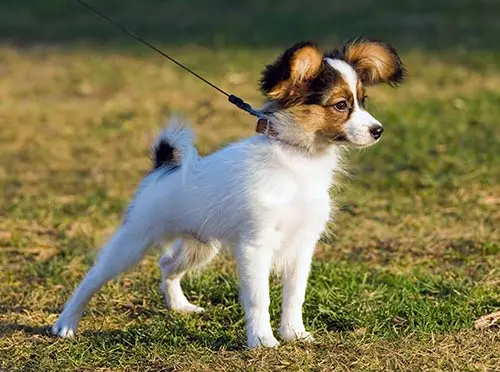
While these little charmers certainly look like lap dogs, they are actually much less apt to hang out on the couch with their humans than other small breeds. Paps are very inquisitive and active, and tend to always be on the lookout for something to do (or a small rodent to catch).
Many Papillons seem to have no clue how small they are, and bring a big-dog attitude to their job as guardians and protectors of their home and family. - Papillons are extroverts

The Papillon is very outgoing and happy. She loves to be around people, and gives kisses to one and all. These little dogs get along well with other pets in the household, including cats, and frequently try to boss bigger dogs around. Paps also love kids, as long as they are gentle and non-threatening.
It's important if children will be around your Papillon that they understand how easy it is to hurt such a tiny dog, and handle her accordingly. If the kids are quite young, you should supervise all interactions involving your Pap. - The Papillon requires lots of attention
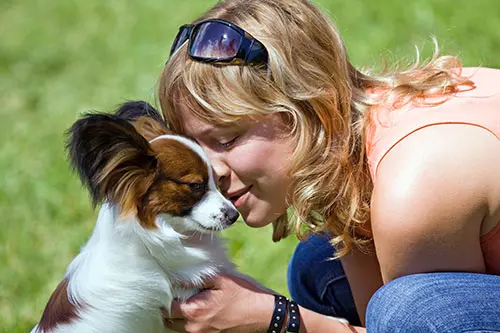
This dog was bred to be a companion, and so your Pap will want to be with you all the time. Papillons generally don't do well in environments where they are left alone for long periods or there is little time for the dog. - The Papillon is relatively low-maintenance
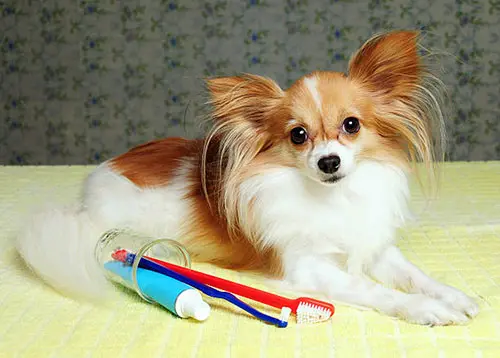
The Papillon coat is long, straight, and fine, with no undercoat. It isn't prone to matting as long as it is combed and brushed once or twice a week to distribute the skin oils and remove dead hair and debris. Paps tend to be odorless, so yours shouldn't need frequent baths. He will, however, need regular nail trims and daily teeth brushing. - Papillons need consistent, positive behavior reinforcement
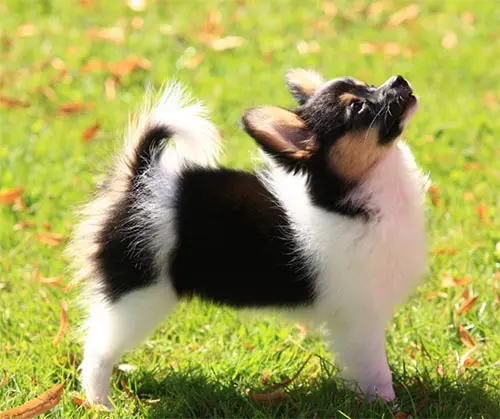
Papillons can be difficult to housetrain (like many small breeds), however, if you're very consistent in taking her out for potty breaks, she'll get the hang of it just like any other intelligent dog who is eager to please her humans. Paps are also known to bark excessively (thus their nickname "yappy Pappy"), but gentle, consistent training will go a long way toward preventing nuisance barking. - Papillons are long-lived
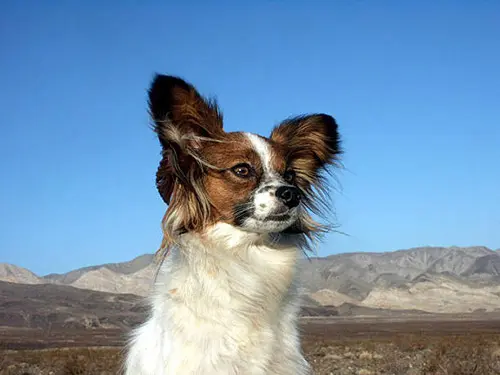
The average lifespan of a Papillon is 12 to 17 years. This breed is generally healthy, but like all purebreds, is prone to certain health concerns, including patellar luxation (floating kneecap), hypoglycemia (low blood sugar), collapsed trachea, and progressive retinal atrophy (PRA), which is a degenerative eye disorder.
Pap puppies are born with a soft spot called a fontanel on the top of their head. Usually the soft spot closes, similar to a human baby's, but sometimes it doesn't close all the way, which means extra care must be taken throughout the dog's life.
Papillons are also among the breeds sensitive to anesthesia, which should be kept in mind when scheduling any surgical procedure. - A Papillon won Best in Show at Westminster
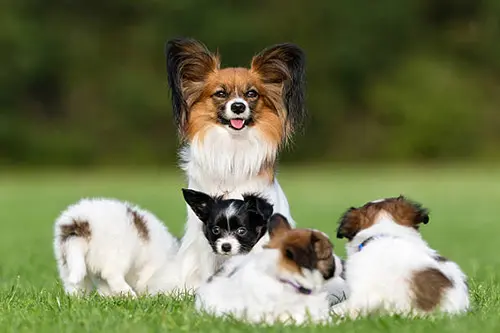
In 1999, Ch. Loteki Supernatural Being (called "Kirby") became the first Papillon to win the title of Best in Show at the annual Westminster Kennel Club.











